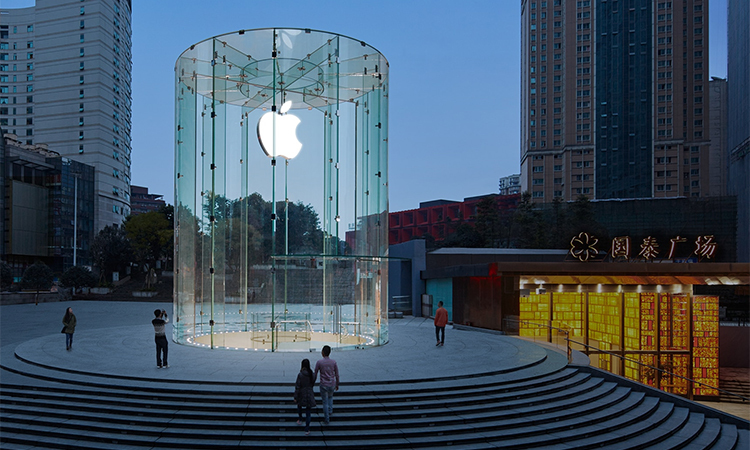iPhone dominates China
According to Counterpoint Research, Apple accounted for almost 24% of smartphone sales in China in the last three months of last year. This is the company’s largest deal for the quarter in this market. The lead-shopping season also helped Apple become the second-largest phone company in the world’s most populous country for the first time in 2022.
Due to the outbreak of Covid-19 and the global economic downturn, Apple’s revenue fell by more than 10% in the fourth quarter of 2022. However, this figure is still lower than that of Chinese competitors such as Vivo, Oppo and Xiaomi. The biggest losers are Vivo with almost 20% and Xiaomi with almost 30%.

Apple store in Chongqing (China). Picture: Apple
Apple began adjusting its production schedules when demand for smartphones has been declining since early last year. While the Pro Series version is still in high demand, there are supply and production issues due to uncertainties at the Zhengzhou factory.
In its third-quarter 2022 earnings report, Apple CEO Tim Cook said the company put “every effort” into the iPhone 14 Pro and 14 Pro Max models, but the results didn’t come out as expected for objective reasons. such as transportation, indirect, production department. He also reminded investors that the industry-wide downtrend could continue into late 2023.
The development of the Chinese phone market is similar to that of the global one. According to IDC, smartphone sales in the last quarter of 2022 totaled 300.3 million units. All big 5 brands declined double digits compared to Q4 2021. The drop in demand during the sales period resulted in an overall market decline of 11.3% in 2022. compared to 2021. Last year, phone companies sold 1.21 billion sets, compared to 1.36 billion last year.
IDC analysts say users are retaining devices longer and the replacement cycle has increased to about 40 months (3.3 years), prompting manufacturers to reconsider device portfolios as retail channels seek to spread existing inventory.
